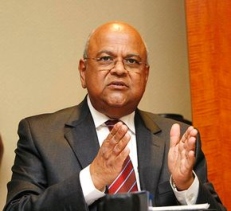[notice]Mike Pothier, research coordinator of the Catholic Parliamentary Liaision Office (CPLO) of the Southern African Catholic Bishops Conference, responds to today’s budget speech.[/notice]

‘Conservative’, ‘prudent’, ‘no surprises’, ‘solid’, ‘not rocking the boat’ – these were the most common descriptions of the 2013/14 budget; just as they have been for the last few years. Flamboyance is not something we associate with Minister Pravin Gordhan, either in the way he delivers his speech or in its contents; in this respect he is unlike his predecessor, Trevor Manuel, who often made the speech an entertaining occasion, and who sometimes was able to make dramatic announcements about income-tax reductions and reduced borrowing requirements.
Mr Gordhan has had a tougher job, given the global economic conditions that have persisted since he took over from Mr Manuel, but he has generally earned praise from most quarters for his budgets. This year’s is no exception. However, it is a mistake to analyse a budget in isolation, without referring to past budgets, and to the plans, intentions and predictions announced in them.
In 2010 Mr Gordhan spoke of a ‘new growth path’ that was intended to make a significant impact on three inter-related problems: unemployment, poverty and low economic growth. In our Response to that budget speech we wrote:
This ‘new growth path’ also echoed something the Minister said early on in his speech: we must do things differently; we can’t carry on doing the same things and expect different (read: better) results.
There are seven facets to the new growth path. Reducing joblessness among young people; supporting labour intensive industries; raising the levels of domestic savings (thus reducing what has to be borrowed from abroad); improving the State’s performance, especially in education; reforming the labour market; keeping inflation low; and improving competitiveness and skills in the workplace.
Of these seven facets, only one has been achieved – inflation has been kept relatively low, within the targeted band of between 3% and 6%. None of the other goals has been reached, and in some cases the situation has deteriorated. Youth unemployment is still above 40%; mining and agriculture, two of our most labour intensive industries, are in crisis; domestic savings remain extremely low, and increases in capital gains and dividend taxes have in fact disincentivised saving; despite nominal improvements in matric pass-rates, the education system is largely dysfunctional, and the State’s performance in many other areas – police, the justice system, parastatals – is below par; nothing at all has been done to reform the labour market; and we have tended to lose places in most indexes of competitiveness and skills-acquisition.
This is what is worrying about our budgets. Each one, taken alone, appears sound, and for a number of years now they have been widely welcomed, even by opposition parties. But viewed together over a period of a few years, they begin to look less impressive. It is a case, to quote what the minister said in 2010, of ‘doing the same things and expecting different results’. Three examples will suffice:
- We are once again spending more money on education than on any other government portfolio. However, our dysfunctional schools and abysmal rates of literacy and numeracy are not the result of insufficient finance, but of inadequate management and teaching. And yet we persist in throwing ever more money at the problem, as if that will address it.
- A youth wage subsidy was announced in the 2010 budget as a very promising means of encouraging employers to find places for the roughly 50% of young people (up to 24 years of age) who are unemployed. It received another mention in 2011 – ‘subject to consultation’ – and it has now been given a third airing: a proposal will soon be tabled in Parliament in this regard. This is certainly a positive step, and a demonstration of political will, but it remains to be seen what the proposal will contain, and how quickly it will become law. Meanwhile, since 2010 three or four matric cohorts will have entered the job market with dismal prospects for employment while government and COSATU butt heads over the subsidy.
- The budget deficit continues to grow. It is now 5.2% of GDP, but forecast to drop to 4.6% in 2014/15, and to 3.1% in 2015/16. However, in the 2011 budget it was forecast to be down to 3.8% by now (a target missed by a margin of 36%, in other words). None of the forecast decreases in budget deficit over the last few years have actually been achieved, which means simply that we are borrowing more and more, and having to pay more and more interest on the borrowings – debt-servicing cost is the fastest-growing item in the budget.
These three examples illustrate the core problem. We are treading water, rather than making real progress. Thus, education absorbs more and more money, but its underlying problems remain unaddressed; instead of taking bold steps to help unemployed youth, government has up to now allowed itself to be held to ransom by the narrow interests of one trade union federation; and we are steadily heading towards the untenable levels of national debt that are now bankrupting countries around Europe.
Conservative and prudent this year’s budget may be, but viewed in series with the three or four preceding ones, the trends that it reveals are cause for concern.






